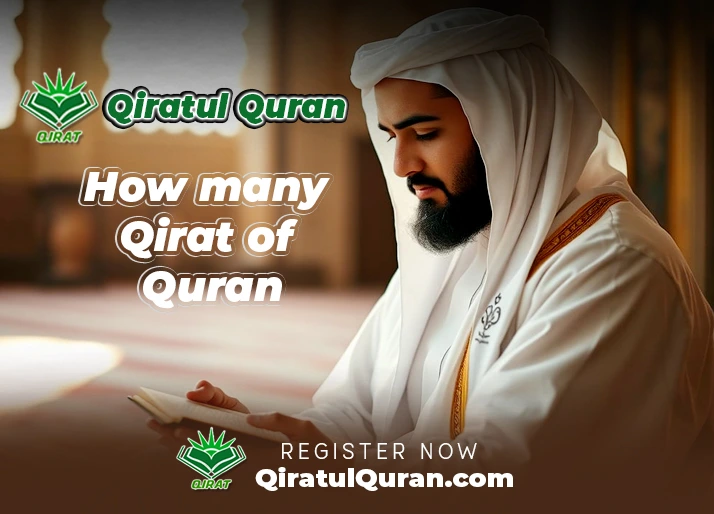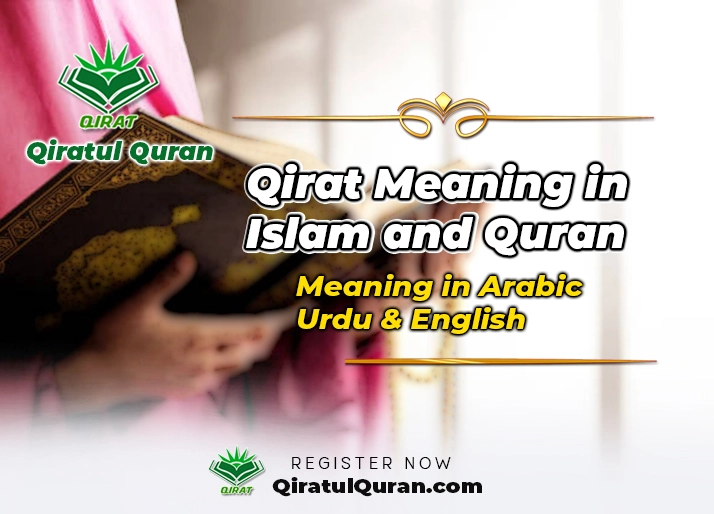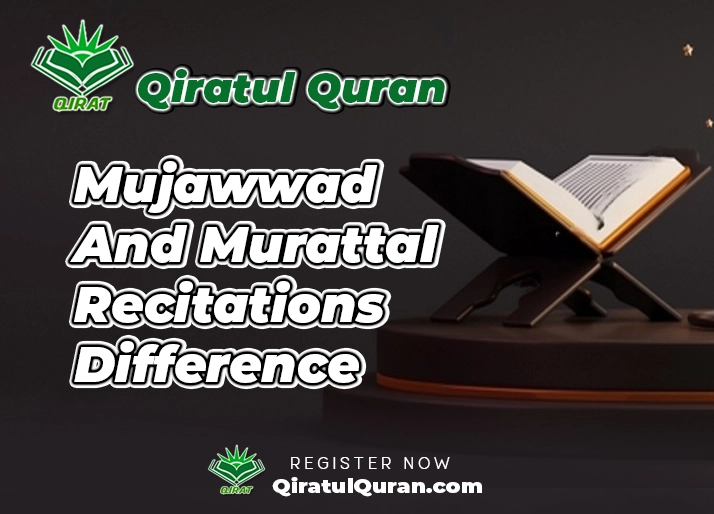The Quran is the divine book revealed to Prophet Muhammad (peace be upon him) over 1,400 years ago. It has been preserved in its purest form, both in text and in recitation. But many Muslims — and especially new learners — often wonder: How many Qirat of the Quran are there? What is the difference between them? These are essential questions for anyone passionate about deepening their connection with the Quran.

Let’s break it down clearly and simply, while also understanding the vital role Qiratul Quran Institute plays in teaching these Qirat in London.
What Does “Qirat” Mean?
The word Qirat (or Qira’at, plural of Qirah) comes from the Arabic word that means “reading” or “recitation.” In the Islamic tradition, it refers specifically to the different authentic ways of reciting the Quran, passed down from generation to generation.
These Qirat are not different versions of the Quran. They are variations in pronunciation, dialect, and recitation techniques. All are valid and verified through mutawatir transmission – meaning they have been passed down by a large number of trustworthy narrators throughout Islamic history.
How Many Qirat of the Quran Are There?
There are Ten Recognized Qirat of the Quran. Each Qirah is named after a famous scholar of Quranic recitation who mastered and taught that particular style.
Here are the ten well-known Qirat:
- Qirat of Naafi’ al-Madani
- Qirat of Ibn Kathir al-Makki
- Qirat of Abu ‘Amr al-Basri
- Qirat of Ibn ‘Amir ad-Dimashqi
- Qirat of Asim al-Kufi
- Qirat of Hamzah al-Kufi
- Qirat of Al-Kisaa’i
- Qirat of Abu Ja’far al-Madani
- Qirat of Yaqub al-Hadrami
- Qirat of Khalaf al-Bazzar
Each Qirah has two primary narrators who further transmit it. These narrators added slight nuances in pronunciation and application that formed sub-readings within each Qirat.
Are All Qirat Equal in Authenticity?
Yes, all ten Qirat are equally authentic and accepted in Islamic scholarship. They are based on strong chains of narration and are backed by scholarly consensus.
How Were the Qirat Preserved?
- Through oral transmission from the time of Prophet Muhammad (PBUH)
- Recitation from teacher to student in Ijazah (certification) chains
- Memorization of exact pronunciation and articulation
Qiratul Quran Institute offers structured learning to help students master each Qirah through qualified teachers and proper Tajweed Course principles.
What Are the Differences Between the Qirat?
Many students think the differences are vast. In truth, most differences are:
- Phonetic: Differences in how letters are pronounced
- Grammatical: Variation in sentence structure (but not in meaning)
- Word Choice: Using different but synonymous Arabic words
- Rules of Tajweed: Slight changes in the application of rules
Let’s explore a few categories to clarify this.
1. Differences in Vowel Pronunciation
Some Qirat elongate certain vowels longer than others. For example:
- In Hafs (a narration of Asim), the word “Maliki” is recited as “Maaliki” (with an extended “aa”)
- In Warsh (from Naafi’), it’s read as “Maliki” (shorter “a”)
Both mean “Master” or “King” in the verse “Maliki Yawmid-Deen” (Master of the Day of Judgment).
2. Differences in Letter Pronunciation
- Some Qirat pronounce letters like ta and sa slightly differently
- Others may emphasize a letter more softly or strongly
3. Variations in Word Forms
- Example: In Surah Al-Baqarah, some Qirat say “Yukhadi’oon”, and others say “Yukhad’oon”
- The meaning remains consistent, but the structure shifts subtly
These small differences enrich the miraculous linguistic beauty of the Quran and highlight its flexibility across Arab tribes and dialects.
Why Were There Multiple Qirat in the First Place?
The Prophet Muhammad (PBUH) permitted the Quran to be recited in multiple dialects of Arabic, making it easier for different tribes to memorize and understand.
Reasons for Multiple Qirat:
- To accommodate various Arab tribes who spoke different dialects
- To show the flexibility and depth of the Quran
- To aid the memorization and spread of Islam across the region
Qiratul Quran Institute teaches students the background and historical context of each Qirah to strengthen their understanding of the Quran.
Can I Choose Any Qirat to Learn?
Yes, students can choose any of the ten Qirat to specialize in. However, the most commonly taught recitation today is Hafs ‘an Asim, which is practiced globally.
Other popular ones include:
- Warsh ‘an Naafi’ (widely recited in North and West Africa)
- Qalun ‘an Naafi’
- Ad-Duri ‘an Abu ‘Amr
Qiratul Quran Institute offers training in all ten Qirat, allowing students in London to explore multiple recitation styles under one roof.
Learning Qirat the Right Way
Studying Qirat requires more than just reading. It involves:
- Proper Tajweed (rules of recitation)
- Articulation (Makharij and Sifat)
- Knowledge of the narrators and transmission chains
What You Learn at Qiratul Quran Institute
- In-depth theory and history of Qirat
- Hands-on recitation practice with certified teachers
- Tajweed rules specific to each Qirah
- Memorization and Ijazah certification
The institute creates a friendly and spiritually uplifting environment for learners of all levels.
Benefits of Studying Multiple Qirat
Choosing to learn more than one Qirah opens the door to deeper Quranic insight. Some key benefits include:
- Appreciating the linguistic beauty of the Quran
- Improved memorization through variation
- Better understanding of grammar and vocabulary
- Increased connection to Quranic sciences
At Qiratul Quran Institute, students often begin with Hafs and later expand into Warsh or other Qirat as they grow in skill.
Common Misunderstandings About Qirat
Some myths and confusions circulate Qirat:
- “Different Qirat mean different Qurans” – Not true. The message is the same; only the recitation style varies.
- “Only scholars should learn Qirat” – Anyone can learn Qirat with the right guidance.
- “One Qirah is better than the other” – All ten Qirat are equally valid and authentic.
How to Start Learning Qirat in London
If you’re based in London, your best option is to join the Qiratul Quran Institute. Their structured Qirat program includes:
- Beginner to advanced level classes
- One-on-one mentorship with certified reciters
- Weekend and evening options
- Courses for children, teens, and adults
Their courses are open for online registration and include access to all ten Qirat for students who wish to pursue Ijazah (formal certification).
Final Thoughts: The Legacy of Qirat
Learning the Qirat is not just an academic pursuit. It’s a way to honor the tradition of the Prophet (PBUH), connect to generations of scholars, and experience the Quran in its most dynamic form.
Qiratul Quran Institute continues to lead the way in London, offering world-class instruction in the Qirat of the Quran. Whether you’re just beginning your journey or ready to deepen your expertise, this institute provides everything you need to learn with confidence and clarity.
Ready to Begin?
Visit the Qiratul Quran Institute website and sign up for the Qirat course that fits your level and schedule. Discover the beauty of the Quran like never before.
Learn it. Live it. Recite it – the way it was revealed. Learn Quran Online. Join Today!





